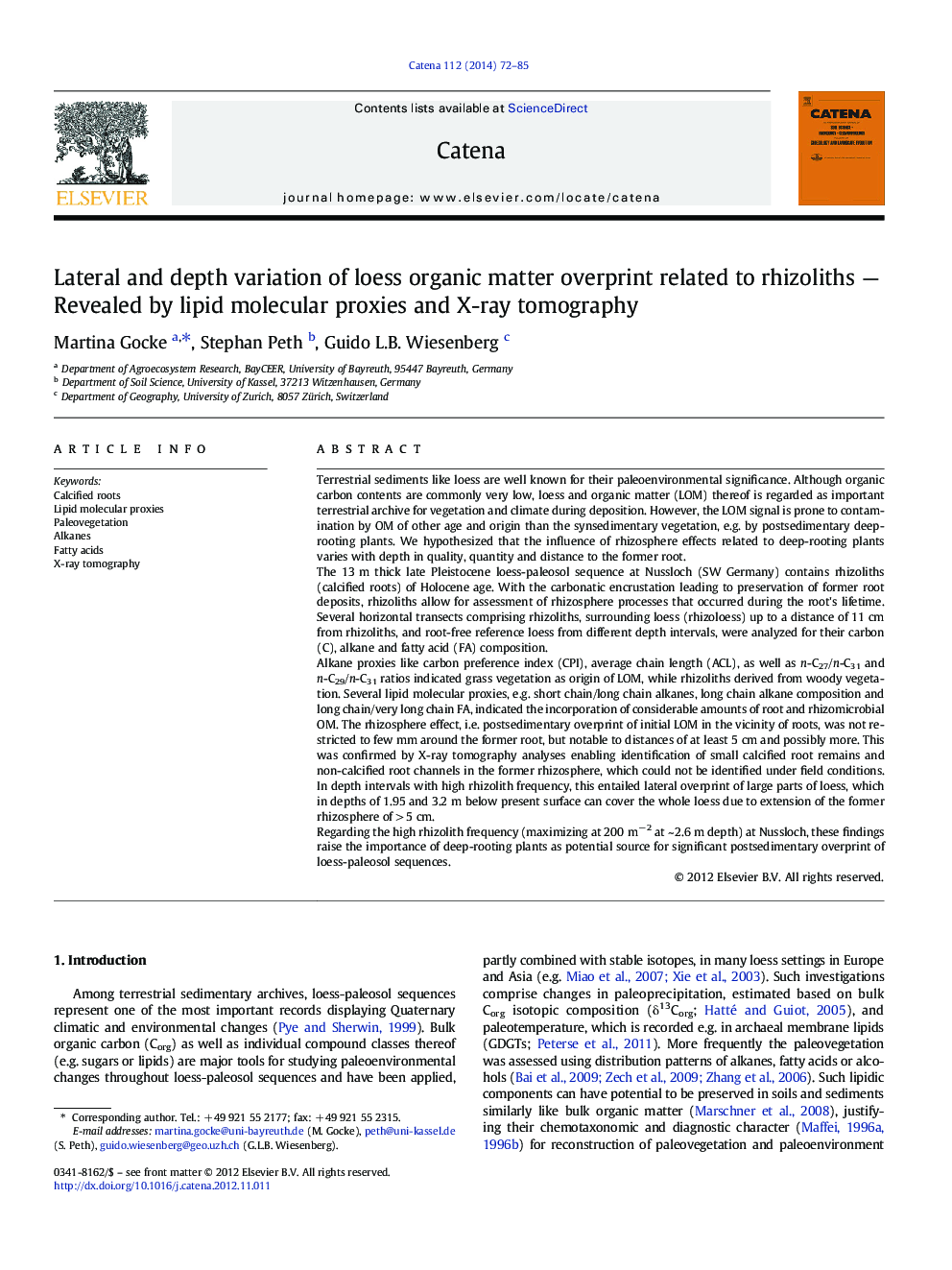| کد مقاله | کد نشریه | سال انتشار | مقاله انگلیسی | نسخه تمام متن |
|---|---|---|---|---|
| 4571555 | 1629240 | 2014 | 14 صفحه PDF | دانلود رایگان |
Terrestrial sediments like loess are well known for their paleoenvironmental significance. Although organic carbon contents are commonly very low, loess and organic matter (LOM) thereof is regarded as important terrestrial archive for vegetation and climate during deposition. However, the LOM signal is prone to contamination by OM of other age and origin than the synsedimentary vegetation, e.g. by postsedimentary deep-rooting plants. We hypothesized that the influence of rhizosphere effects related to deep-rooting plants varies with depth in quality, quantity and distance to the former root.The 13 m thick late Pleistocene loess-paleosol sequence at Nussloch (SW Germany) contains rhizoliths (calcified roots) of Holocene age. With the carbonatic encrustation leading to preservation of former root deposits, rhizoliths allow for assessment of rhizosphere processes that occurred during the root's lifetime. Several horizontal transects comprising rhizoliths, surrounding loess (rhizoloess) up to a distance of 11 cm from rhizoliths, and root-free reference loess from different depth intervals, were analyzed for their carbon (C), alkane and fatty acid (FA) composition.Alkane proxies like carbon preference index (CPI), average chain length (ACL), as well as n-C27/n-C31 and n-C29/n-C31 ratios indicated grass vegetation as origin of LOM, while rhizoliths derived from woody vegetation. Several lipid molecular proxies, e.g. short chain/long chain alkanes, long chain alkane composition and long chain/very long chain FA, indicated the incorporation of considerable amounts of root and rhizomicrobial OM. The rhizosphere effect, i.e. postsedimentary overprint of initial LOM in the vicinity of roots, was not restricted to few mm around the former root, but notable to distances of at least 5 cm and possibly more. This was confirmed by X-ray tomography analyses enabling identification of small calcified root remains and non-calcified root channels in the former rhizosphere, which could not be identified under field conditions. In depth intervals with high rhizolith frequency, this entailed lateral overprint of large parts of loess, which in depths of 1.95 and 3.2 m below present surface can cover the whole loess due to extension of the former rhizosphere of > 5 cm.Regarding the high rhizolith frequency (maximizing at 200 m− 2 at ~ 2.6 m depth) at Nussloch, these findings raise the importance of deep-rooting plants as potential source for significant postsedimentary overprint of loess-paleosol sequences.
► Postsedimentary overprint of loess by deep-rooting plants differs with depth.
► Lateral overprint of loess OM by deep-rooting plants accounts for more than 5 cm.
► Alkane and fatty acid proxies are suitable to identify rhizosphere extension
Journal: CATENA - Volume 112, January 2014, Pages 72–85
